The garden stinks, according to my wife, who is likely referring to the application of deer repellent yesterday, but who has also been known to make critical remarks about my pride and joy. Regarding my wife’s remarks as the more obvious, it is clear that spraying of the repellent was long overdue, though of interest in testing how long the repellent could remain effective, and in particular during a period of many inches of rain.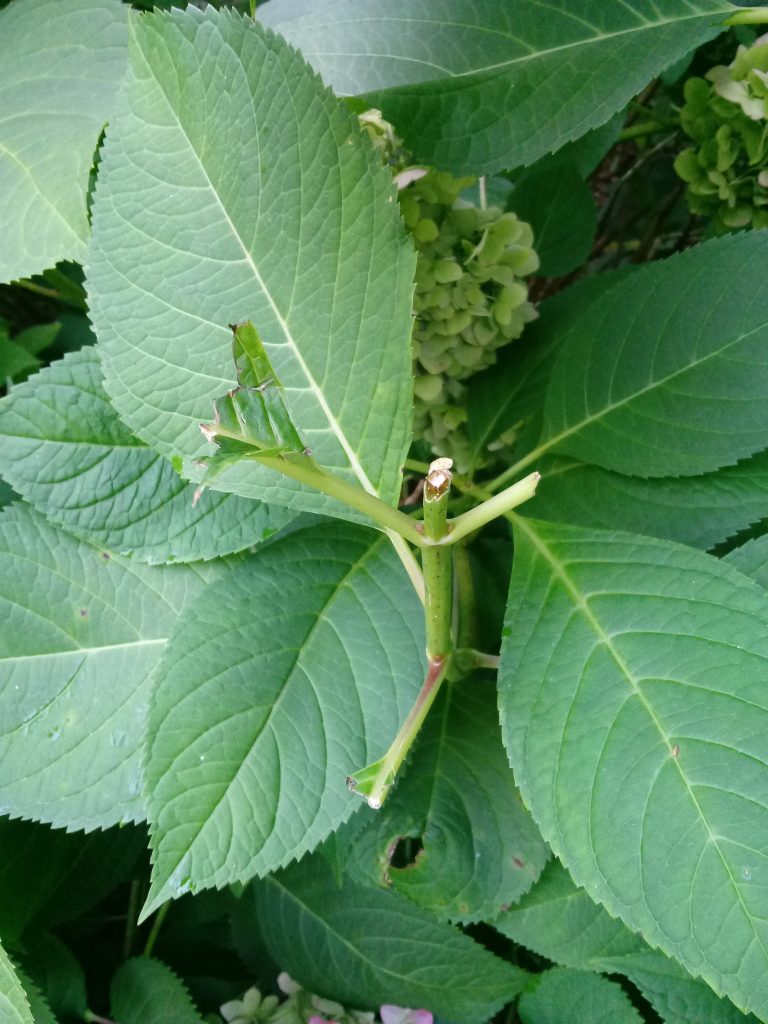
While first signs of deer nibbling were seen two weeks ago, and five weeks after the last application, this is now nearly two months. While a tip or two of mophead hydrangeas (Hydrangea macrophylla) have been nipped, hostas are the true indicator in this garden. Spraying is done in a hurry, as are most chores in this garden, and I could not swear that the few out of the way hostas that are now completely defoliated were sprayed way back when. I’ve missed these before, which is partially why they were kind of puny, and of course this will not help for next year.
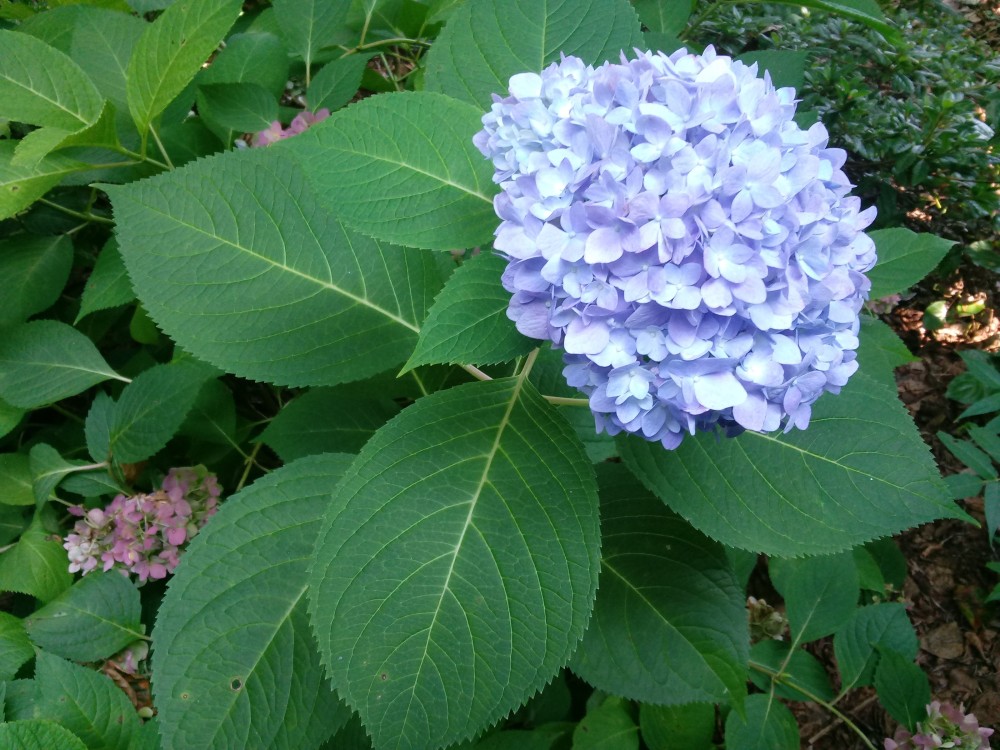
(Note – to address the obvious questions, what do I spray? Currently, I spray Bobbex, but I’ve used other repellents with success in the past. Until a year ago, I alternated two products under the theory, I believe confirmed by science, that deer become too familiar with one scent or taste. Now, instead of two products I add a small amount of hot pepper squirrel repellent in alternating months, which works marginally to dissuade squirrels from eating bird seed, but seems to do the job with deer.)
In any case, the repellent has been sprayed, with particular attention to toad lilies (Tricyrtis, below) that are beginning to flower, but have been chewed to stubs in prior years when I stretched too long. I’ve never intended to spray everything in the garden, nor is it necessary, and so a bit of trial and error is required. It is my hope that new plantings are not ruined before I determine whether they are resistant, or not, and then newcomers go on the list to be sprayed, or not.
While ninety degree days are in the forecast for the coming week, there are numerous signs of autumn in the garden. Why, is beyond my understanding, though I suspect that dwindling hours of daylight are the cause. I should document the changes to compare over the next several years since this seems early, and perhaps related to unusually damp soils from our rainy summer. But, what do I know?
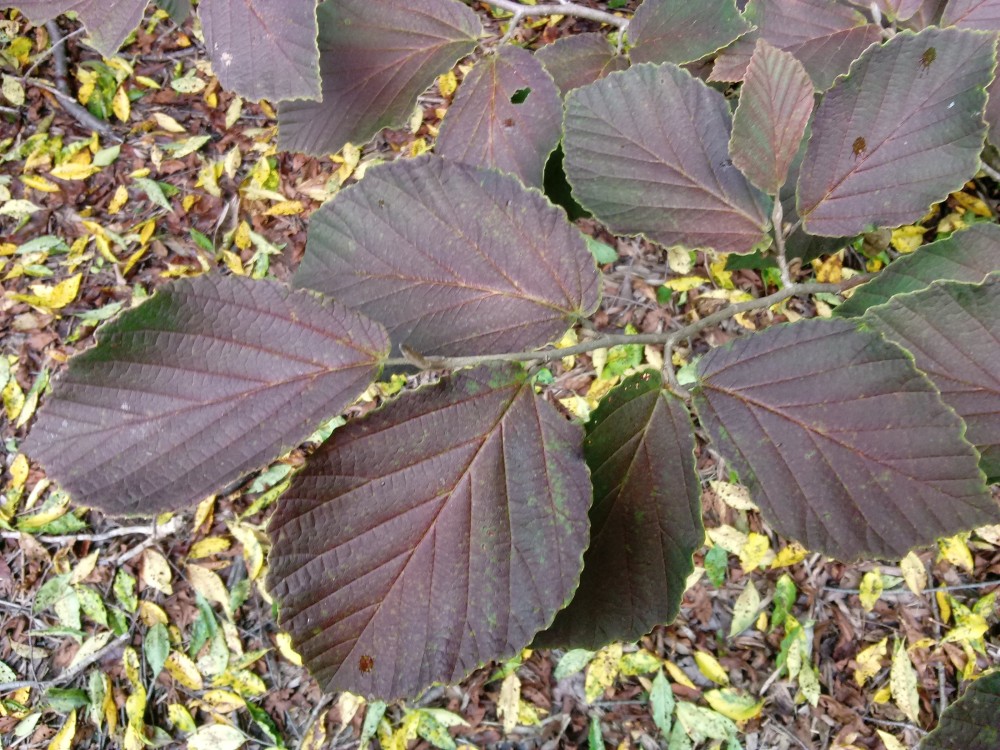
Certainly, some premature leaf drop with water sensitive cherries is due to too much moisture, and a Persian witch hazel (Parrotia persica) turned deep red in June (I think) with roots that extend down into saturated ground even though I’ve considerably improved surface drainage by excavating deeper edges to planting beds in this low area of the garden. A second Parrotia, one planted early in the spring, is doing fine (with no leaf color change) despite being planted precisely where a treasured Franklinia (Franklinia alatamaha) declined and perished several years ago, most likely due to damp soil following the reemergence of a mostly dormant spring.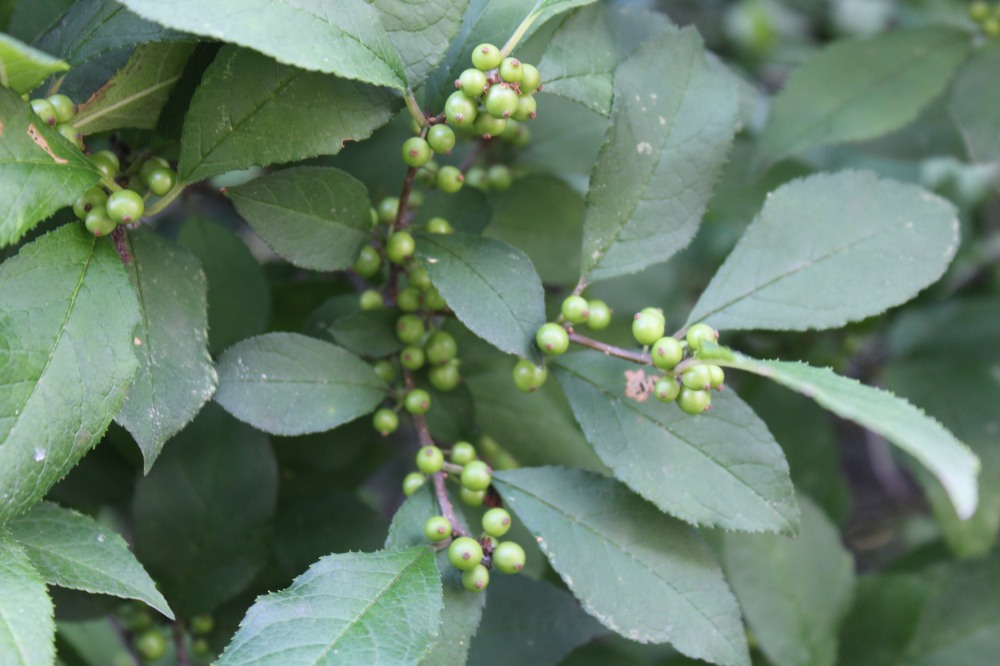
I am happy to see that there are numerous berries on the Winterberry hollies (Ilex verticillata, above) following a period when there were fewer every year. After talking about it for several years, finally I got around to planting another male holly, almost too late for berries a year ago, but today there could hardly be another berry crammed onto the mass of several shrubs. Occasionally things are done on time in this garden, but mostly I’m in the habit of claiming “better late than never”.
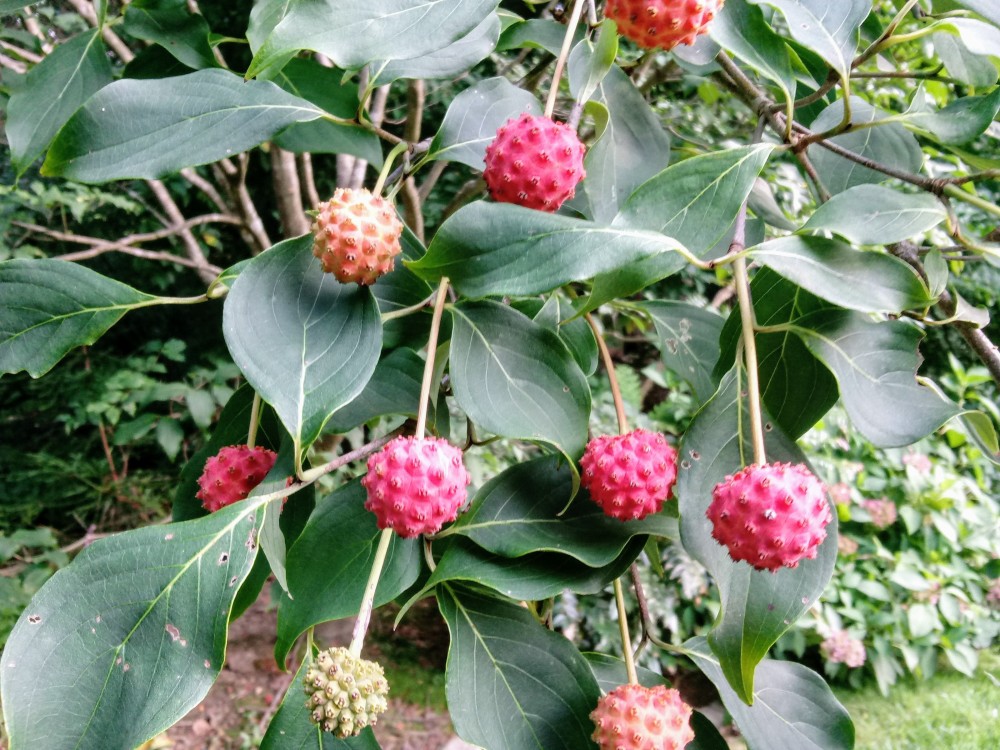
Thanks for posting your deer repellent “test” results.
My garden went 10 weeks between sprayings of Bobbex, with only slight nibbles from deer on a few small tree saplings. I’m not proud of waiting so long between applications; but like yourself, I was occupied with other matters. I have used Bobbex for two years, and find it lasts the longest. Liquid Fence is also extremely effective. In years past, I have alternated with Deer Off which has a nice cinnamon-y fragrance …. one which my neighbors wave approvingly. I have experimented with doing only perimeter spraying. This is done in alternating treatment cycles. It has worked to keep the deer from crossing the “line”. It is quicker and easier to do this application. I pay special attention to the back of the property which backs to wooded parkland, but deer have been seen marching down the street, into the driveway, and parading through the gardens, too! So no port goes unsprayed.
The rains kept things water-logged in my shade garden, and then the mosquitoes were true torture. I went into defense mode with treating water sources with Bti. This began to have a positive affect, making gardening a pleasurable experience again. The birds, bats, dragonflies, damselflies, and bees are all busy in my garden.
Hostas are still blooming, and should last till Autumn. Aahhh 😉
Poor ol’ deers Dave! 😀. They’ll be longing for a visit and a nibble!
I’m sympathetic. I recommend going across the street.There’s still some foliage left on his hostas.
Deer would not be such a problem if they could be trained to eat the plants that we do not want, like blackberry bramble, cat tail, sedge and such. A black acacia showed up near one of the landscapes that I was working on, and before I could get over to pull it up, gophers took it out! It was epic!